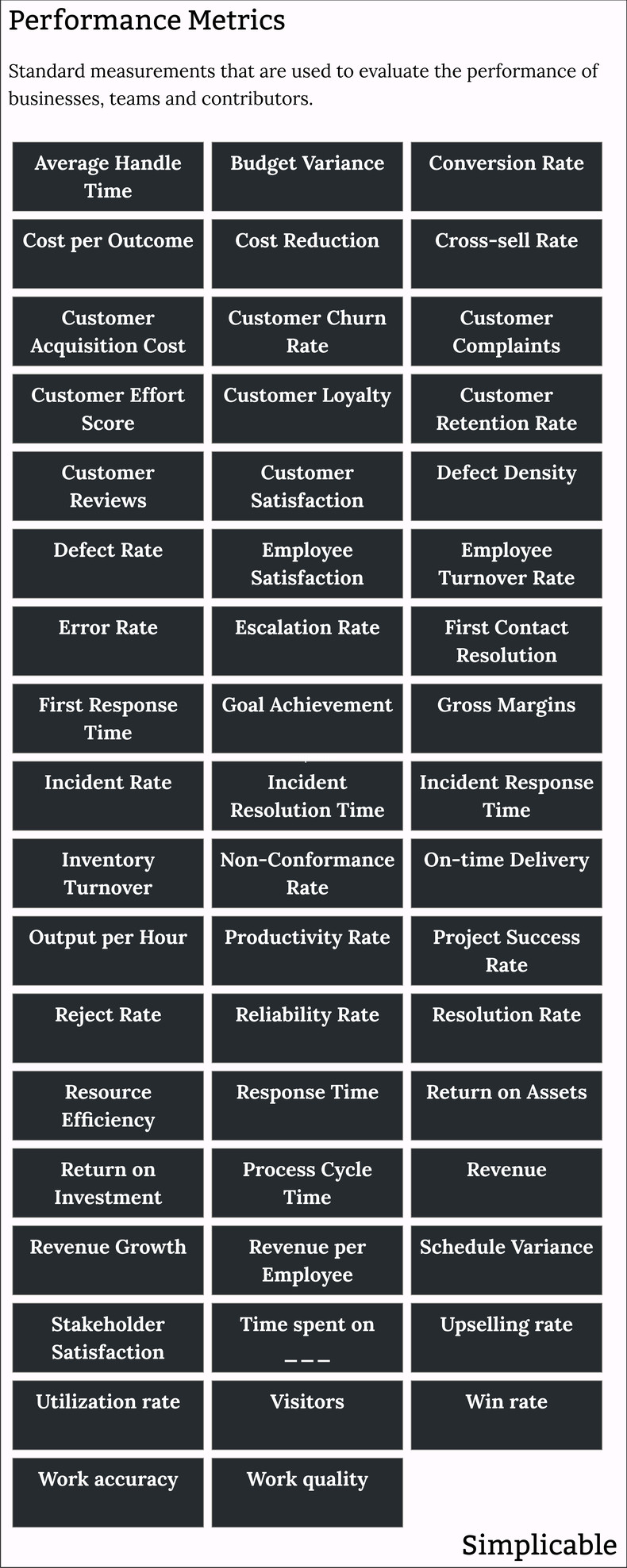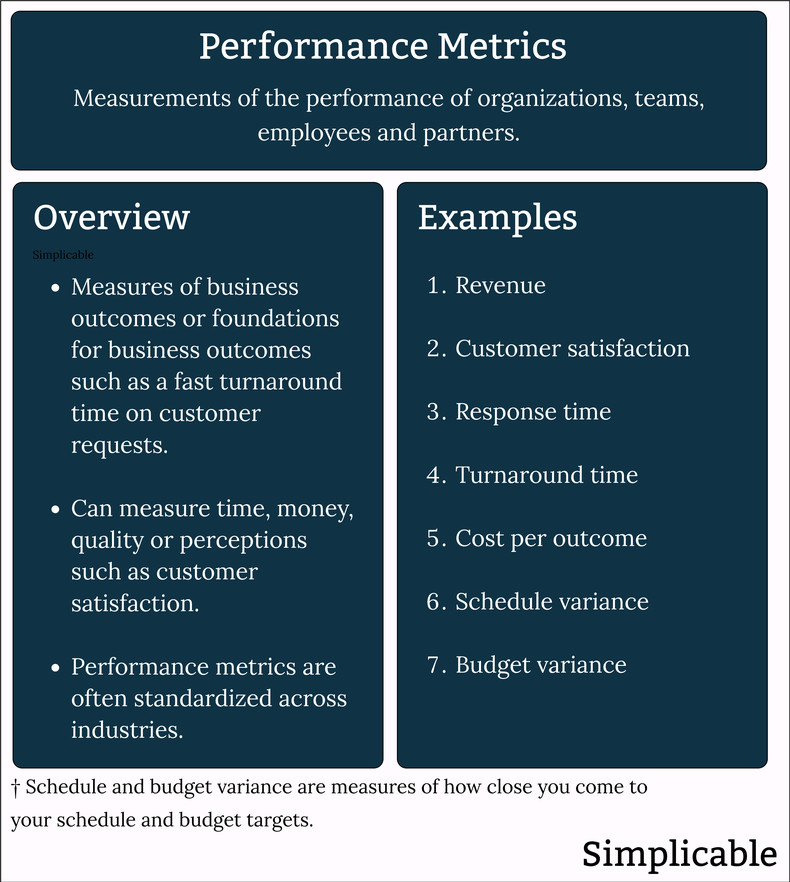
Absenteeism rate | Average handle time |
Budget variance | Call abandonment rate |
Conversion rate | Cost per ___ |
Cost reduction | Cross-sell rate |
Customer acquisition cost | Customer churn rate |
Customer complaints | Customer effort score |
Customer loyalty | Customer retention rate |
Customer reviews | Customer satisfaction |
Defect density | Defect rate |
Employee satisfaction | Employee turnover rate |
Error rate | Escalation rate |
First contact resolution | First response time |
Goal achievement | Gross margins |
Incident rate | Incident resolution time |
Incident response time | Inventory turnover |
Net profit margin | Net promoter score |
Non-conformance rate | On-time delivery |
Output per hour | Productivity rate |
Project success rate | Reject rate |
Reliability rate | Resolution rate |
Resource efficiency | Response time |
Return on assets | Return on investment |
Process cycle time | Revenue |
Revenue growth | Revenue per employee |
Schedule variance | Scrap rate |
Service level adherence | Service usage |
Stakeholder satisfaction | Time spent on ___ |
Upselling rate | Utilization rate |
Visitors | Win rate |
Work accuracy | Work quality |
Return on Capital Employed
The ratio of profits to the total amount of capital invested to achieve those profits. A fundamental indicator of the performance of a firm.Revenue Per Employee
The total revenue of a firm divided by the number of employees. A basic indicator of productivity. Often used as a benchmark to see if you are over or under staffed as compared to other firms in your industry.Cost Effectiveness
The cost per outcome achieved by an organization. For example, a non-profit organization that seeks to reduce microplastics in the ocean may calculate the cost per ton of reduction for both prevention and clean up programs.Productivity
The amount of output per hour of work. A basic measure of employee performance. For example, a software development team might measure story points per month per developer.Efficiency
The amount of output per unit of input. For example, a farm that measures the number of apples produced per acre of land.Waste
The amount of waste per unit of output. For example, a supermarket that tracks the percentage of food products that expire before being sold.Turnaround Time
The average time it takes to compete an activity. For example, the time it takes to resolve customer inquiries.Volume
Volume metrics such as the number of sales deals closed in a month per sales person.Quality
Quality metrics such as customer perceptions of your brand.Budget Variance
The amount that you are over or under budget. Expressed as a percentage of the budget.Schedule Variance
The amount that you are late or early to deliver to commitments. Expressed as a percentage of total scheduled time.Defect Density
The number of defects per output. For example, software development teams may measure defects per thousand lines of code and factories may measure defects per thousand units.Customer Satisfaction
Measuring performance from the customer perspective by asking them how satisfied they are with products or services. A common way to measure the performance of frontline employees.Return on Investment
The contributions to profits generated by an investment such as a project or business purchase. Expressed as a percentage of the investment.New Revenue Rate
The percentage of your revenue that is generated by new products. A way to measure innovation and expenditure on research & development. Requires a definition of "new product" that differs by industry.Summary
The following are common performance metrics for businesses, teams and employees.
Overview
Performance metrics are standard measurements of the value created by a business, team, partner or employee.






































